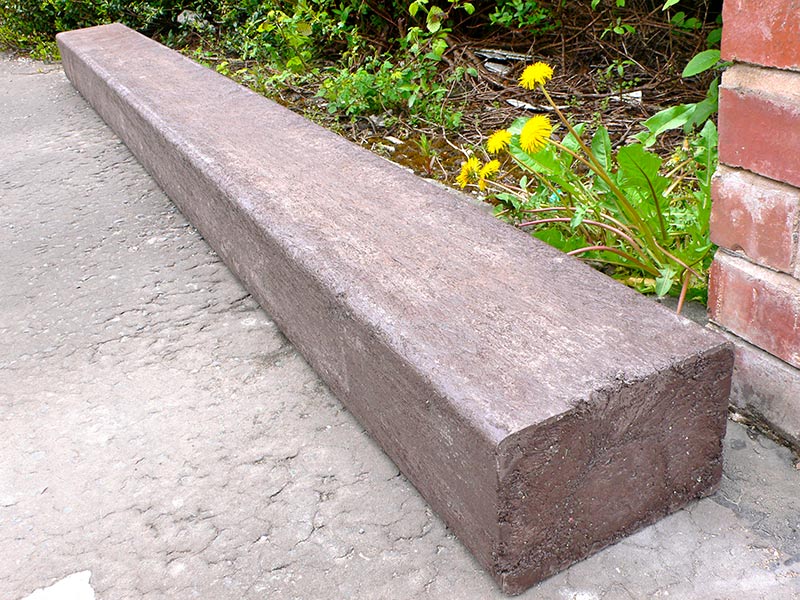What is Recycled Plastic Synthetic Wood?
As a leading UK manufacturer specialising in recycled plastic products, we are excited to delve into an innovative material revolutionising various sectors: recycled plastic synthetic wood. This versatile and eco-friendly alternative to traditional wood offers many benefits and can be used for a wide range of applications. Let's explore what synthetic wood is, how it's made, its environmental advantages, and the projects it can be used for.
What is Recycled Plastic Synthetic Wood?
>Recycled plastic synthetic wood, often referred to as plastic lumber or composite lumber, is a durable material made from recycled plastic waste. Unlike traditional wood harvested from trees, synthetic wood is crafted from a blend of plastics, primarily sourced from post-consumer and post-industrial recycling processes. This blend often includes high-density polyethene (HDPE), polypropylene, and other plastic polymers. The final product mimics the appearance and functionality of natural wood, offering a sustainable and long-lasting alternative.
How is Synthetic Wood Made?

The manufacturing process of synthetic wood involves several critical steps to ensure the final product is robust, aesthetically pleasing, and environmentally friendly. Here’s a step-by-step overview of how recycled plastic synthetic wood is made:
Collection of Recycled Plastics
The process begins with the collection of plastic waste materials, including plastic bottles, containers, packaging materials, and industrial plastic scraps. These plastics are thoroughly cleaned and sorted to remove contaminants or non-plastic materials.
Shredding and Grinding
The sorted plastics are then shredded and ground into small flakes or granules. This step ensures that the plastic is broken down into a uniform size, which is crucial for the consistency and quality of the final product.
Melting and Blending
The plastic granules, along with any additives or colourants, are melted in a high-temperature extruder. This creates a homogeneous mixture that can be moulded into various shapes.
Moulding and Extrusion
The melted plastic mixture is then extruded or moulded into the desired shapes to create synthetic wood profiles. This can include planks, boards, tiles, and other forms that resemble traditional timber. The extrusion process allows for the incorporation of textures and grains, making the synthetic wood look remarkably similar to natural wood.
Cooling and Finishing
Once extruded, the synthetic wood profiles are cooled and cut to the desired lengths. The cooling phase solidifies the material, ensuring it retains its shape and strength. Additional finishing touches, such as sanding or texturing, may be applied to enhance the wood-like appearance and surface quality.
Environmental Benefits of Recycled Plastic Synthetic Wood

One of the most compelling reasons to choose recycled plastic synthetic wood is its positive impact on the environment. Here are some key environmental benefits:
Reducing Plastic Waste
We divert significant amounts of plastic from landfills and oceans by repurposing plastic waste into synthetic wood. This helps mitigate pollution and reduces the negative impacts of plastic waste on wildlife and ecosystems.
Conserving Natural Resources
Using synthetic wood lessens the demand for traditional timber, thus reducing deforestation and conserving our forests. Trees play a crucial role in absorbing carbon dioxide, producing oxygen, and maintaining biodiversity. By opting for synthetic wood, we help preserve these vital natural resources.
Lower Carbon Footprint
The manufacturing process of synthetic wood typically requires less energy than that of traditional timber. Additionally, the use of recycled plastics further reduces the carbon footprint associated with producing new materials, contributing to a more sustainable and eco-friendly production cycle.
Long Lifespan and Durability
Synthetic wood is designed to withstand harsh weather conditions, pests, and decay. Its long lifespan means it doesn't need to be replaced or treated as frequently as natural wood, reducing the overall consumption of materials and resources.
Applications of Recycled Plastic Synthetic Wood

The versatility and durability of synthetic wood make it suitable for a vast array of applications. Here are some of the most common uses:
DIY Projects
Homeowners and DIY enthusiasts can greatly benefit from using synthetic wood for various home improvement projects. Whether building garden planters, decking, shelves, or sheds, synthetic wood provides a reliable and sustainable option. It is easy to work with, requiring no special tools or treatments, and offers a consistent and professional finish.
Landscaping
Synthetic wood is an excellent material for landscaping projects. Its resistance to water, rot, and insects makes it ideal for creating garden borders, raised flower beds, pathways, and edging. Unlike natural wood, synthetic wood won't warp or splinter, ensuring a long-lasting and low-maintenance solution for your garden.
Fencing
Fencing is another popular application for synthetic wood. Traditional wooden fences are prone to decay, weathering, and pest damage. In contrast, plastic wood fencing offers exceptional durability and strength. It requires minimal maintenance – no painting, staining, or sealing – and retains its appearance for years. Additionally, synthetic wood fences can mimic various wood textures and colours, offering both aesthetic appeal and practicality.
Outdoor Furniture
Outdoor furniture made from synthetic wood offers numerous benefits over traditional wooden furniture. It is highly resistant to moisture, UV radiation, and temperature fluctuations, ensuring it doesn't crack, fade, or deteriorate over time. This makes synthetic wood perfect for crafting garden benches, tables, chairs, and other outdoor furniture that can withstand the elements and remain pristine with minimal upkeep.
Decking
Decking is one of the most common uses of synthetic wood. Traditional wooden decks require regular maintenance to prevent rot, splintering, and decay. Plastic wood decking, however, is virtually maintenance-free. It does not absorb water, resists staining, and maintains its structural integrity regardless of weather conditions. This makes it an ideal choice for residential and commercial decking projects, offering a safe, slip-resistant surface that looks great year-round.
Playgrounds
Safety is a paramount concern for playgrounds, making synthetic wood an excellent material choice. It is non-toxic, splinter-free, and strong enough to withstand heavy usage and rough play. Playground equipment, benches, and picnic tables made from synthetic wood provide a safe and durable solution for public parks and recreational areas.
Marine Applications
Given its resistance to moisture and salts, synthetic wood is also well-suited for marine environments. It is commonly used to construct docks, piers, boardwalks, and marina infrastructure. Unlike traditional wood, synthetic wood does not decay or deteriorate when exposed to water and harsh marine conditions.
Recycled Plastic Synthetic Wood: Real-World Examples

To truly appreciate the versatility and effectiveness of synthetic wood, let's explore some real-world examples of its use:
The London Olympic Park extensively used synthetic wood in its design and construction. Walkways, benches, and various landscape features were crafted from recycled plastic synthetic wood and sustainably harvested lumber, showcasing its durability and environmental benefits in a high-profile public setting.
The Eden Project in Cornwall, a renowned ecological attraction, uses synthetic wood in its outdoor decking and seating areas. The material was chosen for its sustainability credentials and resistance to the region's harsh weather conditions.
Sydney’s Barangaroo Reserve in Australia incorporates synthetic wood in its pathways, seating, and recreational structures. This practice aligns with the reserve's commitment to sustainability and environmental protection.
The Future of Recycled Plastic Synthetic Wood
As awareness of environmental issues grows, the demand for sustainable building materials like recycled plastic synthetic wood is expected to increase. Advances in technology will likely lead to even more refined and high-performance synthetic wood products, enhancing their appeal and practical applications.
At Kedel, we are dedicated to driving innovation in recycled plastic materials, continually improving our products to meet the needs of our customers and the planet. By choosing synthetic wood, you are making a conscious decision to support sustainability and protect our natural resources.
Recycled plastic synthetic wood is a remarkable material that offers numerous benefits over traditional wood. It is made from repurposed plastic waste, helping to reduce environmental pollution and conserve natural resources. Its durability, low maintenance requirements, and versatility make it suitable for a wide range of applications, from DIY projects and landscaping to fencing, outdoor furniture, decking, playgrounds, and marine structures.
By opting for synthetic wood, you are not only investing in a high-quality, long-lasting product but also contributing to a more sustainable future. At Kedel, we are proud to provide innovative recycled plastic solutions that help build a greener world. If you’re considering using synthetic wood for your next project or want to learn more about our products, don’t hesitate to get in touch.

.png)

 100% Recycled Plastic
100% Recycled Plastic Will Never Rot
Will Never Rot 25 Year Guarantee
25 Year Guarantee Low Carbon Footprint
Low Carbon Footprint